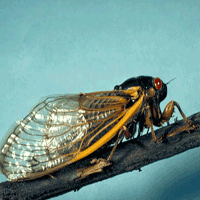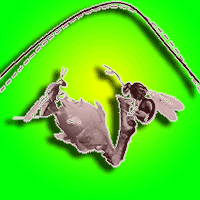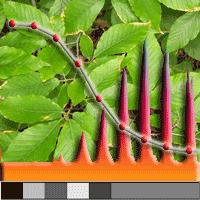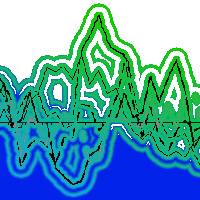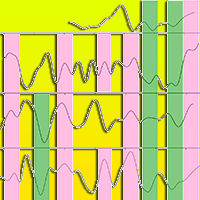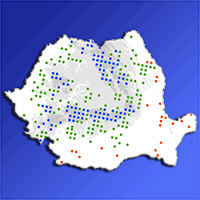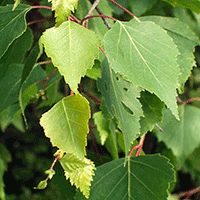
Forests and climate change - lessons from insects
iForest - Biogeosciences and Forestry, Volume 1, Issue 1, Pages 1-5 (2008)
doi: https://doi.org/10.3832/ifor0210-0010001
Published: Feb 28, 2008 - Copyright © 2008 SISEF
Review Papers
Abstract
The climate change may indirectly affects the forest ecosystems through the activity of phytophagous insects. The climate change has been claimed to be responsible of the range expansion northward and upward of several insect species of northern temperate forests, as well as of changes in the seasonal phenology. Several papers have dealt with the prediction of the most likely consequences of the climate change on the phytophagous insects, including some of the most important forest pests. Increased levels of CO2 in the atmosphere involve an increase of the C/N balance of the plant tissues, which in turn results in a lower food quality for many defoliating insects. Some insects respond by increasing the level of leaf consumption and consequently the damage to the tree, whereas others show higher mortality and lower performance. The level of plant chemical defences may also be affected by a change of CO2. The temperature is affecting either the survival of the insects which are active during the cold period, such as the pine processionary moth, or the synchronization mechanism between the host and the herbivores, as in the case of the larch bud moth. An increase of temperature may alter the mechanism by which the insects adjust their cycles to the local climate (diapause), resulting in faster development and higher feeding rate, as in the case of the spruce web-spinning sawfly outbreaks in the Southern Alps.
Keywords
Authors’ Info
Authors’ address
Dipartimento Agronomia Ambientale e Produzioni Vegetali, Università di Padova, Via Università 16 - Agripolis, I-35020 Legnaro, Padova, Italy
Corresponding author
Paper Info
Citation
Battisti A (2008). Forests and climate change - lessons from insects. iForest 1: 1-5. - doi: 10.3832/ifor0210-0010001
Paper history
Received: Oct 18, 2007
Accepted: Oct 24, 2007
First online: Feb 28, 2008
Publication Date: Feb 28, 2008
Publication Time: 4.23 months
Copyright Information
© SISEF - The Italian Society of Silviculture and Forest Ecology 2008
Open Access
This article is distributed under the terms of the Creative Commons Attribution-Non Commercial 4.0 International (https://creativecommons.org/licenses/by-nc/4.0/), which permits unrestricted use, distribution, and reproduction in any medium, provided you give appropriate credit to the original author(s) and the source, provide a link to the Creative Commons license, and indicate if changes were made.
Web Metrics
Breakdown by View Type
Article Usage
Total Article Views: 70714
(from publication date up to now)
Breakdown by View Type
HTML Page Views: 56792
Abstract Page Views: 4519
PDF Downloads: 7907
Citation/Reference Downloads: 132
XML Downloads: 1364
Web Metrics
Days since publication: 6502
Overall contacts: 70714
Avg. contacts per week: 76.13
Citation Metrics
Article Citations
Article citations are based on data periodically collected from the Clarivate Web of Science web site
(last update: Mar 2025)
Total number of cites (since 2008): 44
Average cites per year: 2.44
Publication Metrics
by Dimensions ©
Articles citing this article
List of the papers citing this article based on CrossRef Cited-by.
References
Herbivory in global climate change research: direct effects of rising temperature on insect herbivores. Global Change Biology 8: 1-16.
CrossRef | Gscholar
Dispersal: an important driving force of the cyclic population dynamics of the larch bud moth, Zeiraphera diniana Gn. Forest Snow and Landscape Research 74: 1-153.
Gscholar
Waves of larch budmoth outbreaks in the European Alps. Science 298: 1020-1023.
Gscholar
Bioecologia de la procesionaria del pino Thaumetopoea pityocampa Schiff. Incidencia de los factores climaticos. Boletin Servicio Plagas Forestales 12: 9-24.
Gscholar
The Structure and Dynamics of Geographic Ranges. Oxford University Press, New York, US.
Gscholar
La bioécologie de la processionaire du pin. Dispersion potentielle. Dispersion actuelle. Phytoma 225: 11-20.
Gscholar
Winter moth Operophtera brumata (Lepidoptera: Geometridae) outbreaks on Scottish heather moorlands: effects of host plant and parasitoids on larval survival and development. Bulletin of Entomological Research 86: 155-164.
Gscholar
Modelling the effects of climate change on the potential feeding activity of Thaumetopoea pityocampa (Den. & Schiff.) (Lep., Notodontidae) in France. Global Ecology and Biogeography [doi: 10.1111/j.1466-8238.2006.00302.x].
CrossRef | Gscholar
Assessment of observed changes and responses in natural and managed systems. In: Climate Change 2007: Impacts, Adaptation and Vulnerability. Contribution of Working Group II to the Fourth Assessment Report of the Intergovernmental Panel on Climate Change (Parry ML, Canziani OF, Palutikof JP, van der Linden PJ, Hanson CE eds). Cambridge University Press, Cambridge, UK, pp. 79-131.
Gscholar
Technical Summary. In: Climate Change 2007: The Physical Science Basis. Contribution of Working Group I to the Fourth Assessment Report of the Intergovernmental Panel on Climate Change(Solomon S, Qin D, Manning M, Chen Z, Marquis M, Averyt KB, Tignor M, Miller HL eds). Cambridge University Press, Cambridge, United Kingdom and New York, NY, USA.
Gscholar

